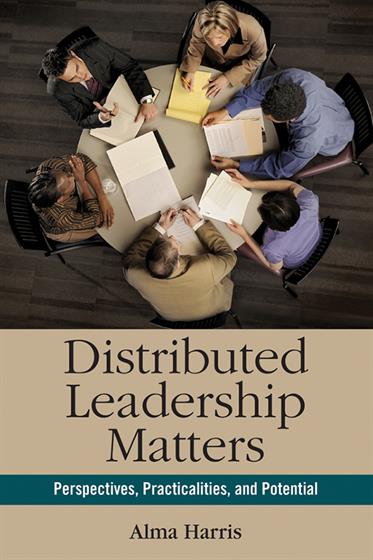Description
“Alma Harris is a world leading writer on the thinking and practice of distributed leadership. This is undoubtedly the best book that she or anyone has yet written on the subject.”
—Andy Hargreaves, Thomas More Brennan Chair in Education
Boston College
“Alma Harris captures the essential challenges facing today’s school and district leaders and summarizes, in precise and accessible language, important research-based lessons for practice. Her focus on building authentic relationships among all staff is both practical and a welcome antidote to an excessive focus on testing and standardization.”
—Karen Seashore, Professor
University of Minnesota
The benefits of distributed leadership are yours with this research-based change process.
Distributed leadership—engaging the many rather than the few in school improvement—has long been a promising theory. But it must be implemented effectively before educators and students can reap the rewards, including improved learner outcomes and stronger organizational performance.
Distributed Leadership Matters offers pragmatic approaches for realizing these benefits. First, Alma Harris shows why harnessing educators’ collective expertise is an improvement strategy worth adopting. Then she details the collaborative processes that make it happen. Insights include:
- How to translate the research on distributed leadership into tangible results for your school
- Methods for building the social capital necessary for sustainable institutional change
- How to distribute leadership widely and wisely through professional collaboration
The old-fashioned “top-down” leadership style no longer works for today’s schools. Distributed Leadership Matters is a bold step into the future.
Key features
1. Even though the theory of distributed leadership is now well known and firmly established in the minds of those who think and write about leadership the important matter of how to make it happen is less well traversed territory. Accounts of distributed school leadership still tend towards theory, debate, discussion, ideological bias and analysis rather than practical application.
This book makes a direct contribution between theory and practice. It argues that distributed leadership is not just a powerful analytical frame or the latest leadership theory but it is also a leadership approach that, if properly constructed and enacted in schools and districts, can result in better learner outcomes. The book proposes, that under the right conditions, distributed leadership can be a positive influence on organizational change and improvement.
2. Throughout this book there are questions or points to consider that aim to do two things; firstly to prompt focused reflection and secondly, to highlight and reinforce the central argument and themes that run throughout the book.
3. The last chapter is a deliberate departure from other chapters in the book as it provides a practical framework aimed at supporting professional collaboration in districts and schools.
4. This book argues that it is the practice of leadership that is most important if the goal, in schools and districts, is to secure better instruction and improved learner outcomes. This book anchors distributed leadership in the core work of instruction and argues that to be most effective, leadership distribution has to be first and foremost focused upon improving learner outcomes.



